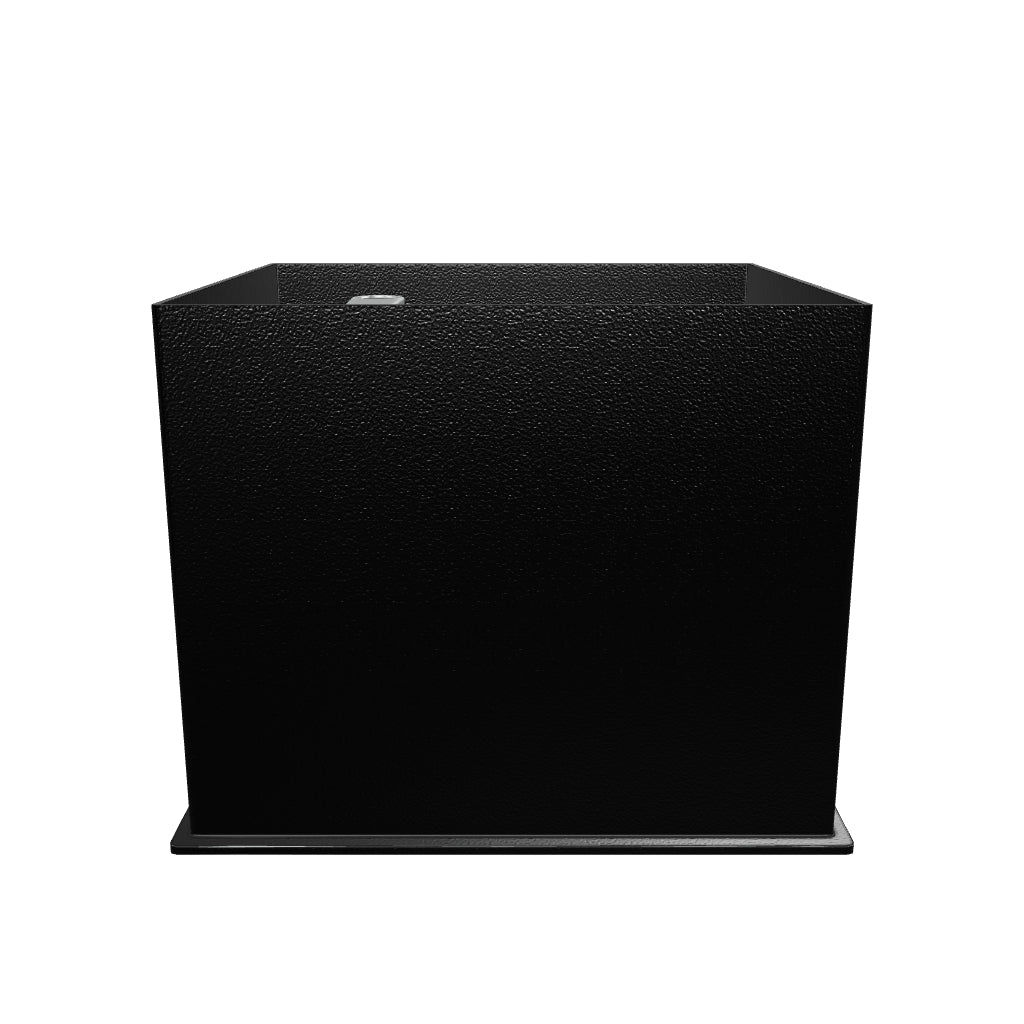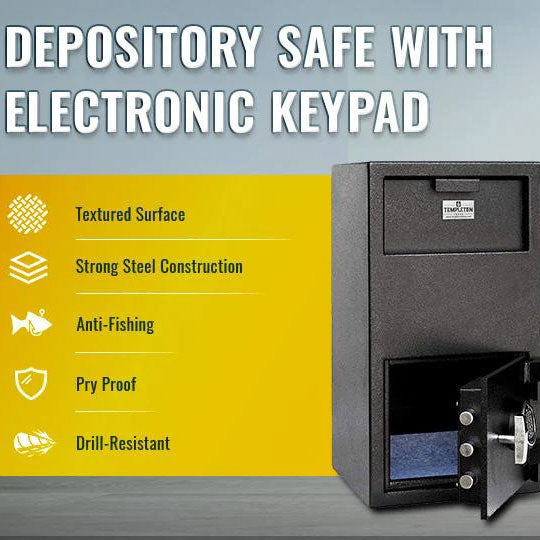Choosing the Right Safe Lock Mechanism for Your Security Needs
When it comes to protecting your valuables, choosing the right security safe is crucial. But just as important as the safe itself is the type of lock mechanism it uses. From manual combination locks to high-tech biometric options, understanding the pros and cons of each type can help you make the best choice for your security needs.
Why Your Safe's Lock Mechanism Matters
The lock mechanism is the heart of your security safe. It determines how easily you can access your valuables, how secure they are from intruders, and even how user-friendly the safe is for multiple users. With so many options available, it’s essential to understand the key differences to find the perfect fit for your home, business, or personal use.
1. Manual Combination Locks: Classic and Reliable
How Manual Combination Locks Work
Manual combination locks are the traditional choice for safes. They require the user to turn a dial to align numbers or letters in a specific sequence to unlock the safe. These locks have been around for decades and remain popular for their reliability.
Advantages of Manual Combination Locks
-
No power required: Manual locks operate without electricity or batteries, making them reliable even during power outages.
-
Long-lasting: With no electronic components, they are less prone to malfunctions and can last for years with minimal maintenance.
-
Tamper-resistant: The lack of electronic parts makes these locks harder to hack or manipulate.
Disadvantages of Manual Combination Locks
-
Slower access: Opening a manual combination lock can be time-consuming, especially if you’re in a hurry.
-
User error: Forgetting the combination or misaligning the numbers can make it difficult to unlock.
Manual combination locks are ideal for those who prioritize reliability over convenience, such as in homes or businesses with low access frequency.
2. Biometric Locks: Cutting-Edge Security
How Biometric Locks Work
Biometric locks use unique physical characteristics, such as fingerprints, to grant access. These locks are often found on high-security safes and are popular for their advanced technology and ease of use.
Advantages of Biometric Locks
-
Quick access: Biometric locks provide instant access, making them perfect for emergencies.
-
No combinations to remember: Forgetting a combination or losing a key is no longer a concern.
-
High security: Fingerprint recognition ensures that only authorized users can open the safe.
Disadvantages of Biometric Locks
-
Power dependency: Biometric locks require electricity or batteries to function, making them vulnerable during power outages if there’s no backup.
-
Higher cost: These locks are typically more expensive due to their advanced technology.
-
Potential malfunctions: Dirty or injured fingers may occasionally fail to register.
Biometric locks are an excellent choice for tech-savvy individuals or businesses needing quick, secure access to their safes.
3. Multi-User Electronic Keypad Locks: Versatile and Convenient
How Multi-User Electronic Keypad Locks Work
Electronic keypad locks allow users to input a numeric code to open the safe. Many models support multiple user profiles, enabling different people to have their unique access codes.
Advantages of Multi-User Electronic Keypad Locks
-
Ease of use: Simple to program and operate, making them user-friendly for all ages.
-
Multiple users: Ideal for businesses or shared spaces, as each user can have a personalized code.
-
Audit trails: Advanced models can track who accessed the safe and when, offering an additional layer of security.
Disadvantages of Multi-User Electronic Keypad Locks
-
Battery dependency: These locks require batteries, which need regular replacement to avoid lockouts.
-
Code vulnerabilities: Sharing or forgetting codes can pose a security risk.
Multi-user electronic keypad locks are perfect for families, businesses, or organizations where multiple people need access to the safe.
4. Key Locks: Simple and Traditional
How Key Locks Work
Key locks use a physical key to secure and unlock the safe. They are one of the simplest and most straightforward locking mechanisms available.
Advantages of Key Locks
-
No power required: Key locks function without electricity or batteries, ensuring reliability.
-
Affordable: Generally, key locks are among the most cost-effective options.
-
Simple to use: Just insert the key and turn—no codes or fingerprints to remember.
Disadvantages of Key Locks
-
Lost keys: Misplacing the key can result in being locked out of your safe.
-
Limited security: Keys can be copied or stolen, making this option less secure than others.
Key locks are suitable for those looking for an affordable and straightforward solution, especially for low-risk environments.
Comparing Lock Types: Which One Is Right for You?
| Lock Type | Best For | Pros | Cons |
|---|---|---|---|
| Manual Combination | Traditional users, low-access environments | Reliable, no power needed, tamper-resistant | Slow access, potential for user error |
| Biometric | High-tech users, quick access needs | Instant access, high security, no codes | Expensive, power-dependent, potential issues |
| Multi-User Electronic Keypad | Families, businesses, shared spaces | Easy to use, supports multiple users | Battery dependency, code vulnerabilities |
| Key Lock | Budget-conscious, low-risk environments | Affordable, simple to use, no power required | Lost keys, limited security |
Tips for Choosing the Right Safe Lock Mechanism
-
Evaluate your security needs: Consider the value of the items you’re protecting and the level of access control you need.
-
Think about convenience: How often will you need to open the safe? If quick access is essential, biometric or electronic keypads may be best.
-
Consider maintenance: If you prefer a low-maintenance option, manual combination or key locks are ideal.
-
Budget wisely: While advanced locks offer more features, they come at a higher cost. Choose a lock type that balances your needs and budget.
-
Account for the environment: Ensure your lock mechanism can withstand conditions like humidity, dust, or extreme temperatures if the safe will be in a challenging environment.
When selecting the ideal safe for your security needs, it's essential to choose a reliable provider. Templeton Safes offers a range of high-quality options suitable for various settings, including schools, small businesses, courthouses, halfway homes, medical facilities, and offices.
Featured Products:
-
T865 Large Depository Drop Safe with Multi-User Keypad and Key Backup: This robust safe features a digital combination lock supporting up to six unique user codes, making it ideal for environments where multiple individuals require access.
-
T866 Depository Drop Safe with U.L. Listed LG1777 Combination Lock: Equipped with a UL-listed combination lock and a spring-loaded re-locker, this safe provides enhanced security by keeping the safe locked even after lock removal.
-
T867 Standard Depository Drop Safe with Multi-User Keypad and Additional Lock Box: This model offers a digital combination lock allowing up to six different user codes, catering to shared access needs.
Templeton Safes' products are designed to meet diverse security requirements, ensuring that your valuables are protected in any setting. Explore their full range of safes to find the perfect solution for your specific needs.
Note: Product availability and specifications are subject to change. Please visit Templeton Safes' official website for the most current information.
Final Thoughts
Choosing the right safe lock mechanism is about finding the balance between security, convenience, and budget. Whether you opt for the timeless reliability of a manual combination lock, the advanced technology of a biometric system, the versatility of a multi-user electronic keypad, or the simplicity of a key lock, the perfect option is out there to meet your needs. Take the time to evaluate your specific requirements, and you’ll find a locking mechanism that keeps your valuables safe and gives you peace of mind.






























